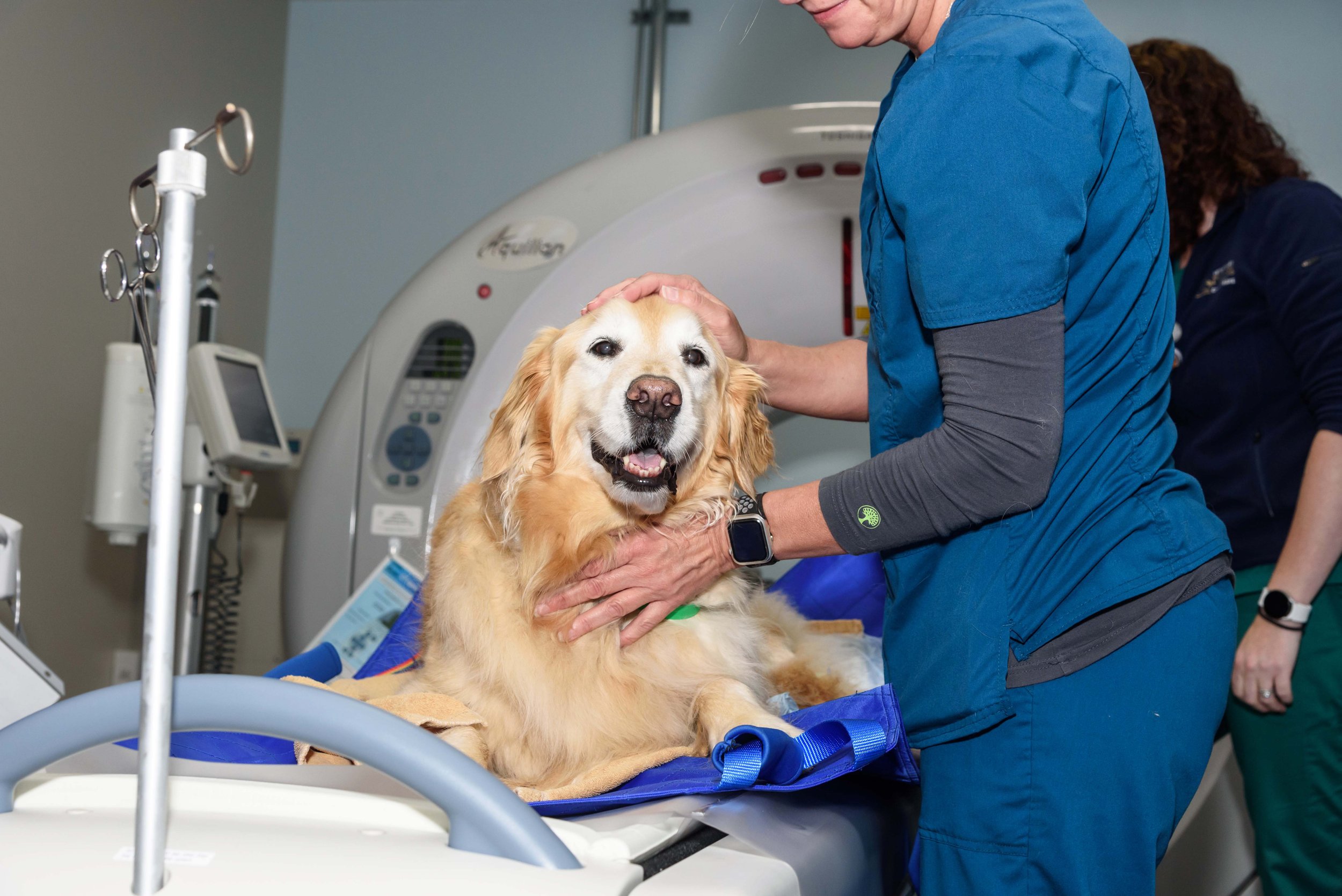ADVANCED IMAGING
CT and MRI are essential medical imaging techniques that offer detailed insights into a patient’s body. VNIoC is proud to provide exceptional image quality with our state-of-the-art scanners.
CT scanners use X-rays to provide cross-sectional and 3-dimensional images of the area of interest, making it most ideal for looking at bones, certain tumors, internal organ structures and vasculature. MRIs employ a powerful magnetic field to produce high-resolution detailed images of soft tissues, making it the gold standard for imaging the spinal cord and brain, as well as giving the most detailed images of joints (like the shoulder or knee) for musculoskeletal disorders.
WHAT TO EXPECT DURING IMAGING SCANS
WHAT’S THE DIFFERENCE?:
CT vs. MRI Scans
The choice between CT and MRI depends on the specific clinical scenario, the body part being examined, and the information required by the healthcare provider to make an accurate diagnosis.
-
CT: Uses X-rays to create cross-sectional and 3-dimensional images of the body.
MRI: Uses a powerful magnetic field and radio waves to generate detailed images of the body's soft tissues.
-
CT: Detailed images of bones, blood vessels, and organs.
MRI: High-resolution images of organs, muscles, nerves, and ligaments.
-
CT: Typically 10-20 minutes. CT’s are often used in emergency situations due to their rapid completion time.
MRI: Typically 40-60 minutes
-
CT: No, many studies can be done under sedation
MRI: Yes, due to the time that your pet needs to stay absolutely still and the overall distracting performance of the MRI, anesthesia is required.
-
CT: $1,900 – $2,200 depending on the number of sites requested.
MRI: $2,500 – $3,300 per site
-
CT:
Useful for detecting and diagnosing conditions such as fractures, tumors, and bleeding.
Suited for bone injuries/malformations, lung, chest, and abdomen imaging. CT provides excellent cancer detection and screening. Widely used on ER patients.Useful for detecting and diagnosing conditions such as fractures, tumors, and bleeding.
MRI:
Particularly effective in detecting abnormalities in the brain, spinal cord, and joints. MRI is often used for diagnosing conditions such as brain tumors, joint injuries, and musculoskeletal disorders.
Suited for soft tissue evaluation- spinal cord injury, brain, ligament and tendon injury
-
CT: Can be performed on patients with metallic implants, such as pacemakers or joint replacements, although some precautions may be necessary.
MRI: Patients with metallic implants, such as pacemakers may not be eligible for MRI scans due to artifacts and safety concerns.
-
CT: Sometimes. Contrast agents may be used during CT scans to enhance the visibility of particular structures or abnormalities.
MRI: Sometimes. Contrast agents may be requested during MRI scans to enhance the visualization of specific tissues or abnormalities.
-
CT:
Yes, CT scans involve exposure to ionizing radiation, although the amount is typically considered safe.
The effective radiation dose from CT ranges from 2 to 10 mSv, which is about the same as the average person receives from background radiation in 3 to 5 years.
MRI:
No, MRI does not involve exposure to ionizing radiation, making it a safer option for repeated imaging, particularly in pediatric and pregnant patients.
-
CT: Can pose the risk of irradiation. The scan is painless and noninvasive.
MRI: No biological hazards have been reported with the use of MRI.
CHOOSING THE RIGHT IMAGING FOR YOUR PATIENT
Generally, MRI is superior for visualizing soft tissue, while CT provides excellent detail for bone structures. However, MRI tends to be more expensive, less widely available, and takes longer to perform, which can lead to extended anesthetic times. It can also be more challenging to monitor patients unless MR-compatible monitoring equipment is used. Fortunately, VNIoC has anesthesia monitoring equipment that is compatible and safe to use within the MRI magnet.
It is important to note that MRI is contraindicated for certain implants, such as pacemakers, and ferromagnetic materials (like stainless steel plates, microchips, or bullets) which can cause regional artifacts that may compromise the imaging study.
In cases where a brain lesion is suspected, MRI is more sensitive and specific for diagnosing primary or metastatic brain tumors, encephalitis, vascular lesions, and degenerative disorders. The exception is in the case of acute head trauma, where CT is often preferred to identify skull fractures and acute hemorrhages, as these features are typically more visible on CT in potentially unstable patients, and the shorter scan time is crucial.
For spinal lesions, MRI is better suited for detecting non-calcified disc extrusions (in non-chondrodystrophic or older chondrodystrophic breeds), soft tissue tumors (such as meningiomas), and intraparenchymal lesions (like fibrocartilaginous embolic myelopathy, meningomyelitis, and syringomyelia). Conversely, CT is appropriate for evaluating bony lesions (like fractures, discospondylitis, and bony neoplasia) and calcified disc extrusions (particularly in middle-aged chondrodystrophic breeds).
If a clinician deems MRI to be necessary but the pet owner opts for CT due to concerns about cost or risks, it's important to understand that CT results may be non-specific. In such cases, MRI may still be needed if the CT results are inconclusive or normal.
REFER FOR ADVANCED IMAGING
With our state-of-the-art MRI and CT scanners, we provide exceptional image quality to aid in an accurate diagnosis and precise treatment planning. Our commitment to swift and efficient service ensures minimal waiting times for appointments and prompt delivery of imaging results.
You can trust that, with VNIoC, your patients will receive expedited imaging services, enabling timely intervention and improved patient outcomes.






